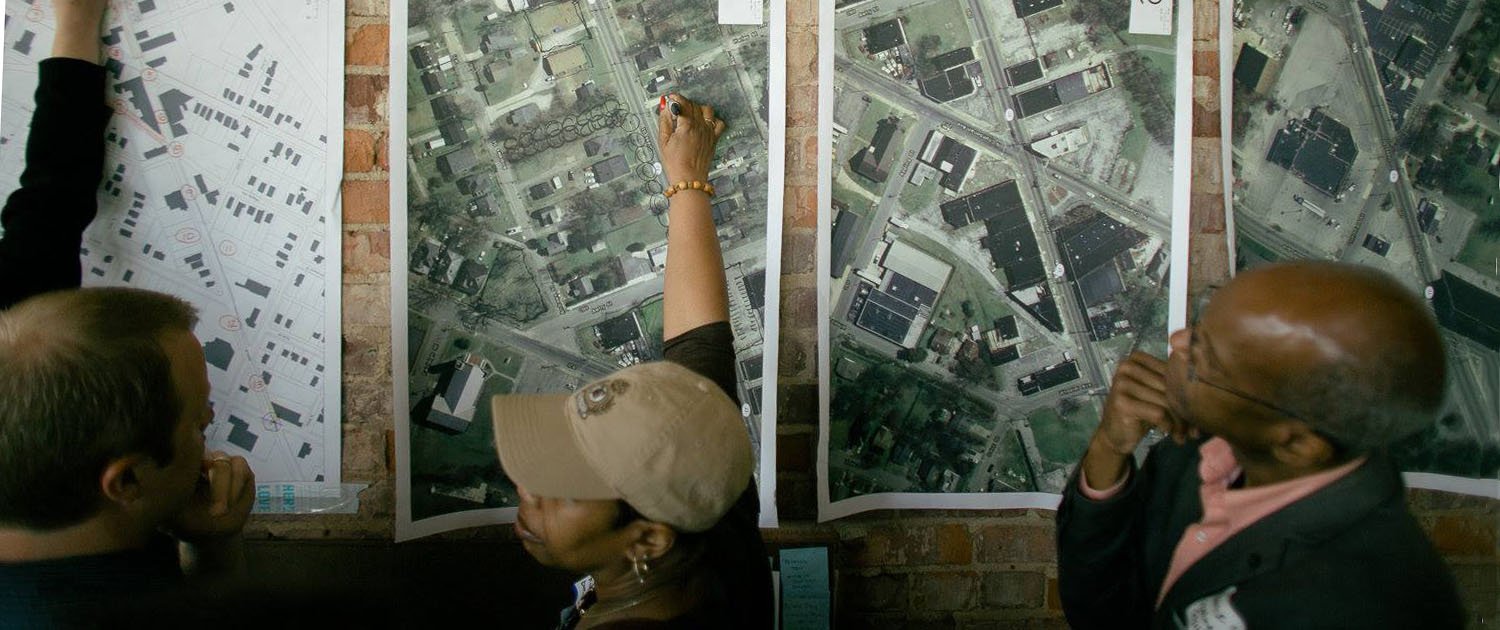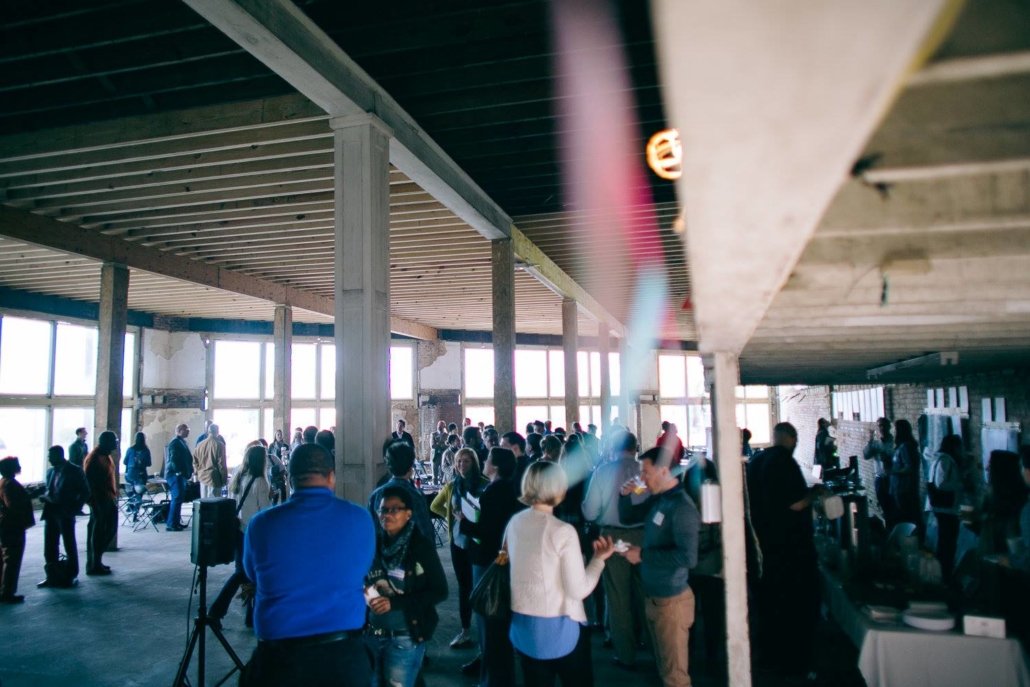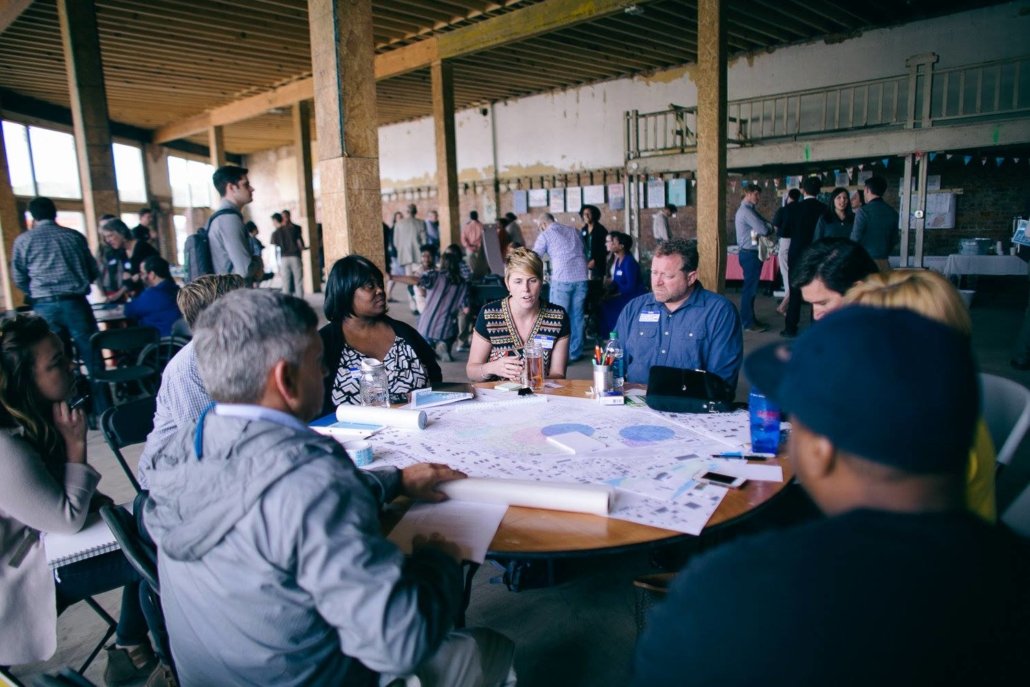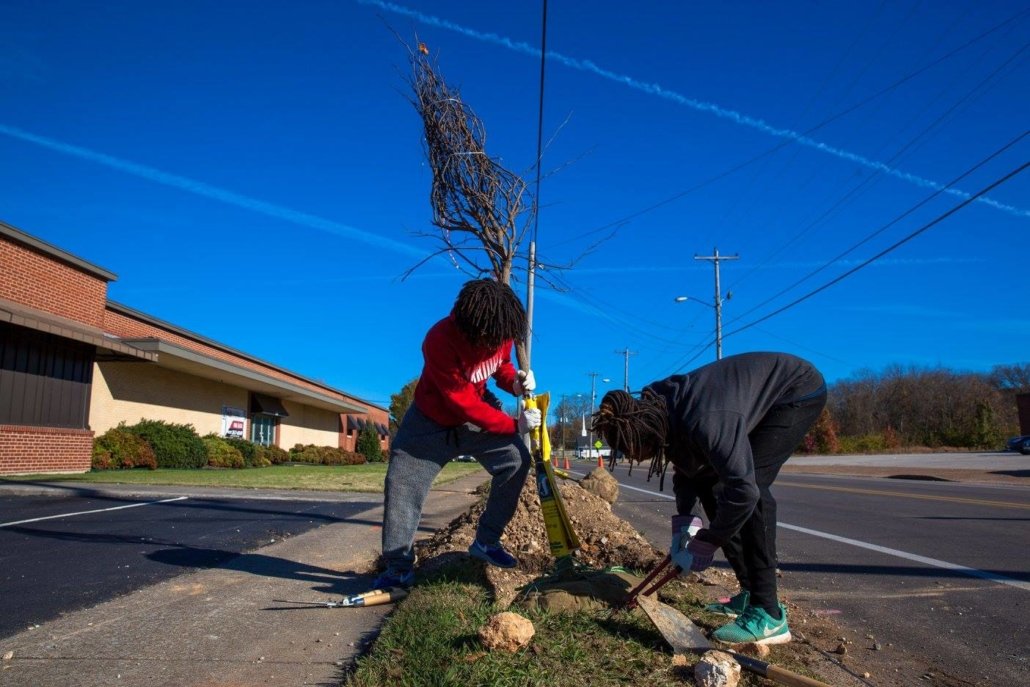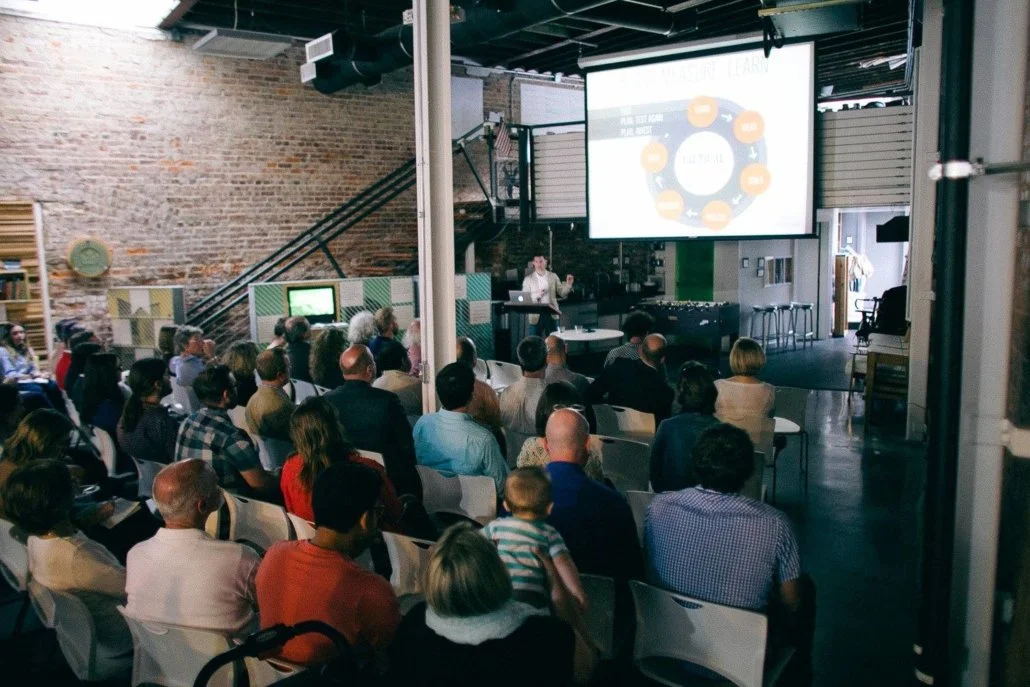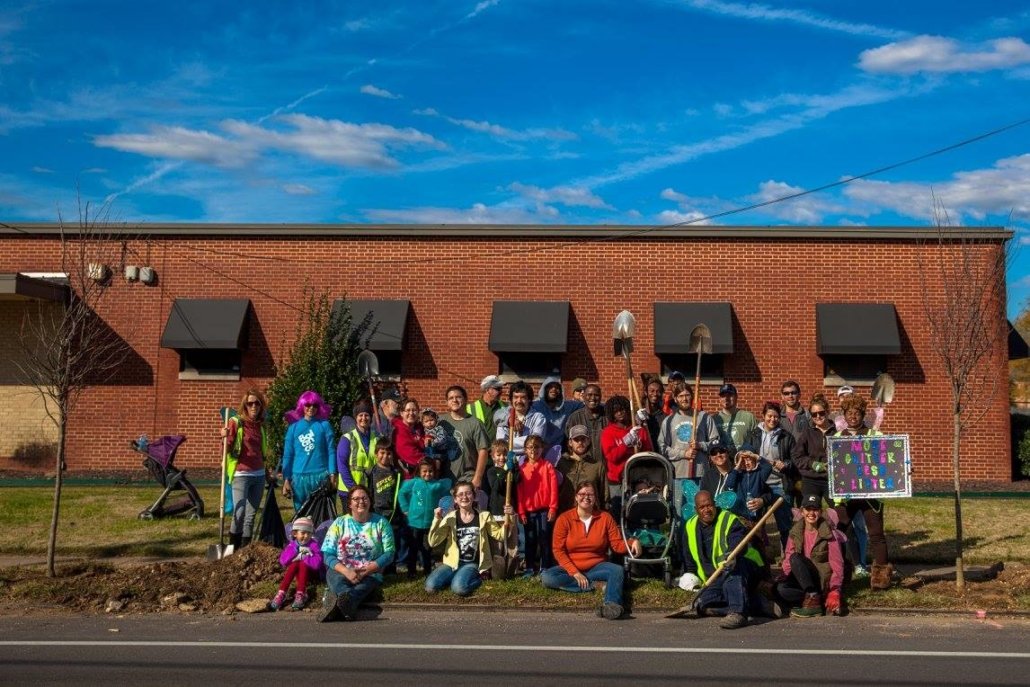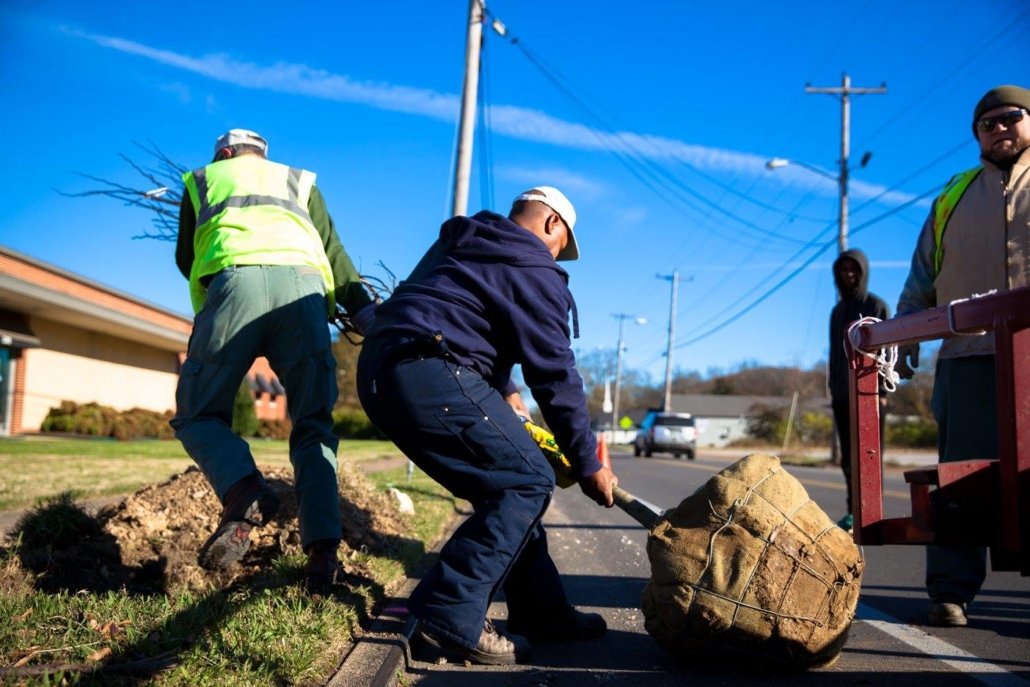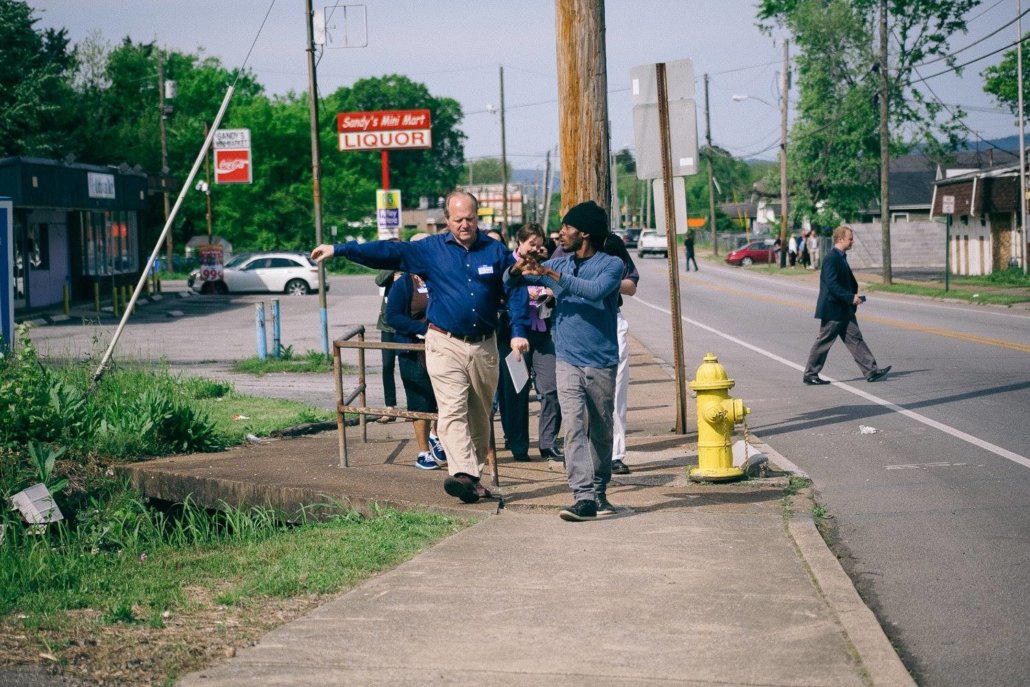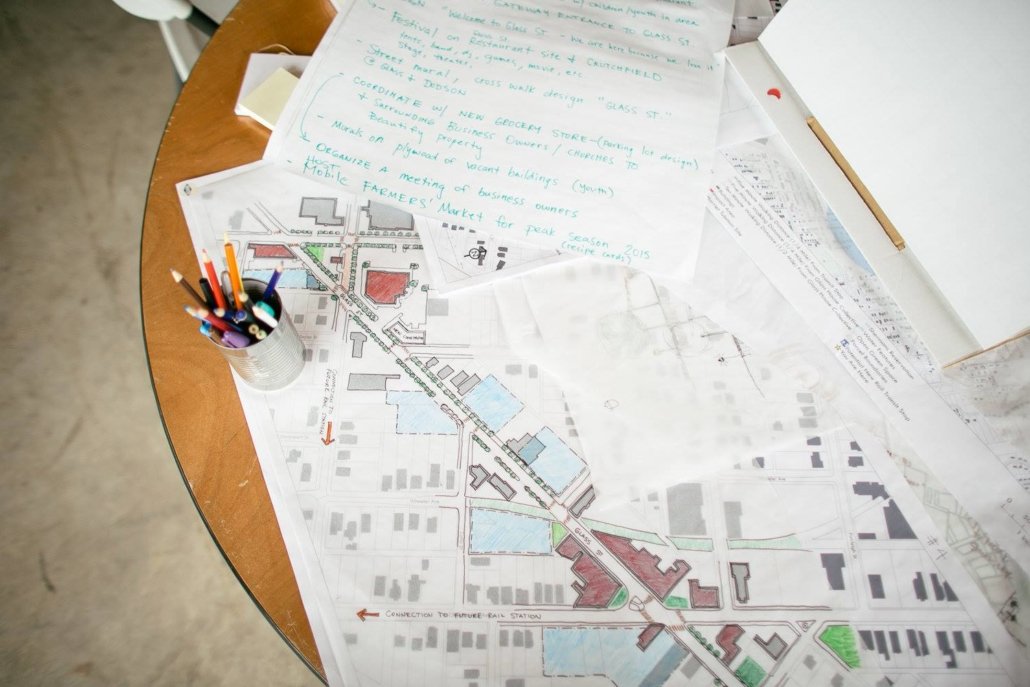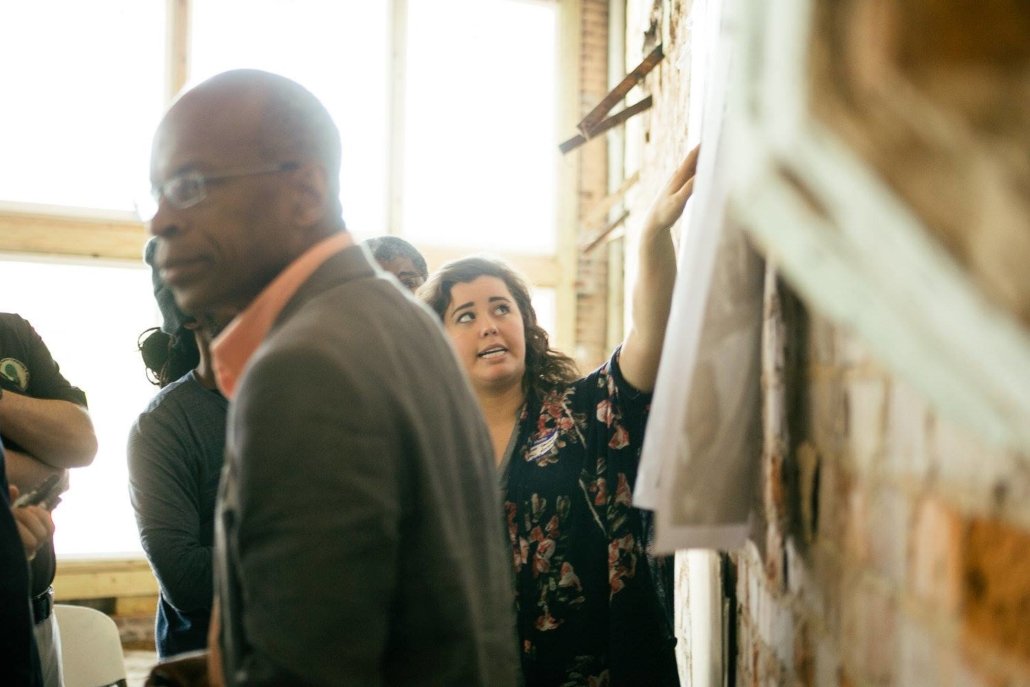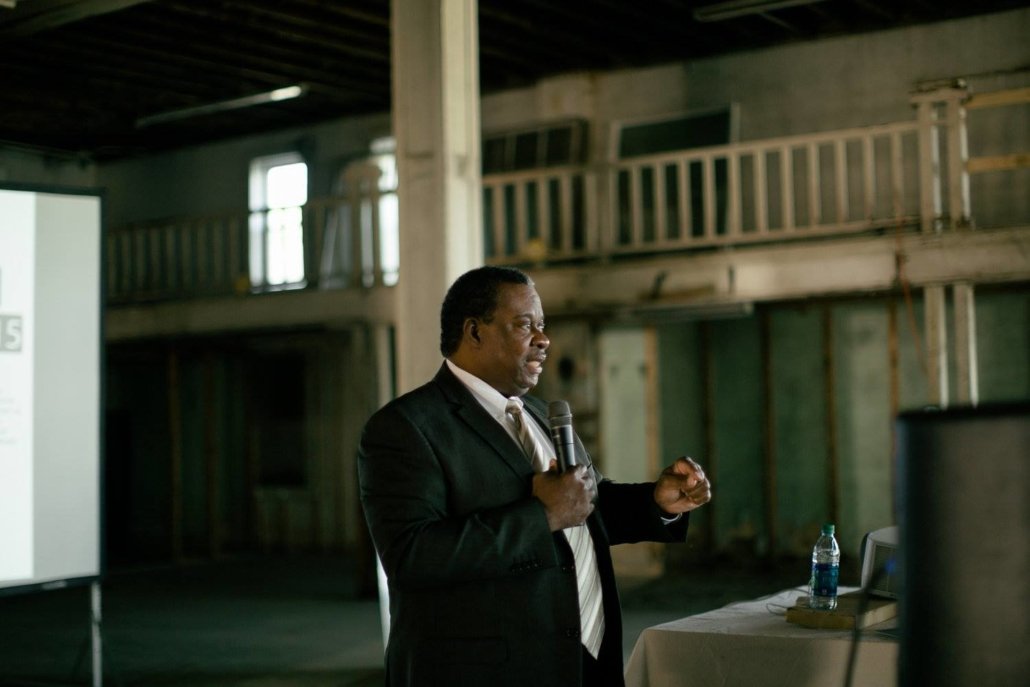The goals of the conference were to produce creative, scalable, and realistic project ideas that would improve the neighborhood both practically and aesthetically. The newly joined team, facilitated by urban designer Mallory Baches, spent the first evening at a meet and greet hosted by green|spaces. It began with an introduction by Glass House Collective’s Teal Thibaud, followed by a short presentation by Mike Lydon on Tactical Urbanism, during which he encouraged starting small, taking risks, and testing realistic ideas. The group was then dismissed with an invitation to The Flying Squirrel for further casual discussion.
The second day was spent at the former Alabama Furniture building to put the ideas to paper. The team was split into nine groups, each given a prompt to centralize their ideas with, and two facilitators, a Chattanooga local and a guest from out of town. Then they were later led through the neighborhood to survey the area and meet the residents and business owners. Project ideas were then timeline into those that could be done in a week, a year, and three years, and prepared to be presented the next day. An archive of the presentations can be found here.
Glass House Collective compiled all of the ideas and hit the streets to find out which projects were most important to community members. We used the community’s priorities to create our next work plan, with short and long-term goals to be achieved over the next three years. We quickly got to work and created a How-To Guide with directions, materials, and tools for projects that can be executed within one month. The How-To Guide included eight ‘lighter, quicker, cheaper’ projects that are replicable, scalable, and affordable.
We fundraised for implementation dollars and were able to install seven of the projects by the end of 2016. At the heart of each project is Glass House Collective’s most essential belief: artists who have been empowered to work alongside residents will create a new place and a new story. These projects were all related to the long-term change underway in the Glass Street community, intended to “test” permanent infrastructure and build social capital. Some of the projects to come out of the guide were Pop-Up Movie Nights, Bike Repair Station and Rack, Public Art Gateway Sign, and Sandwich Board Signage.
The Next Big Thing Urbanism Workshop
Partners:
